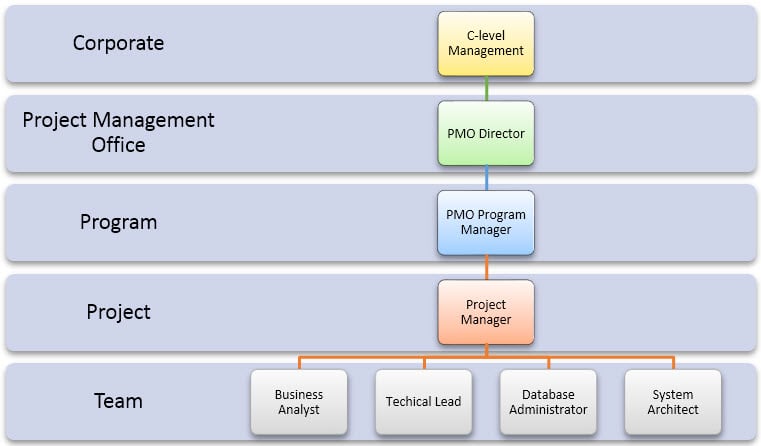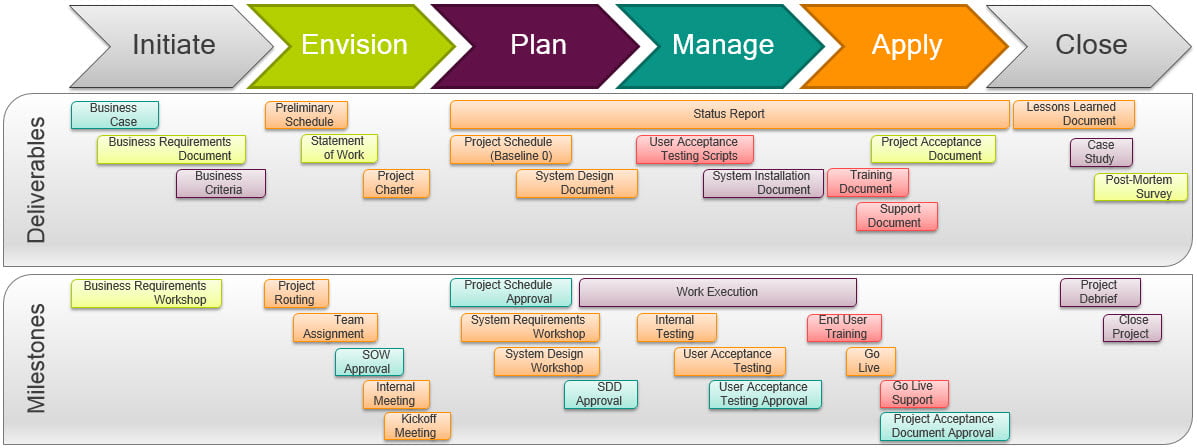In Part 1 of this series, I talked about Planning The Transition to establish a PMO by developing a Business Case and assessing the current project management processes within a company. Once company approval of a PMO is accepted, the next step will be to Create a PMO Governance.
Stage 2 – Create a PMO Governance

Establishing Roles/Responsibilities within the PMO. Depending on the overall size of the company and the amount of current and future projects will determine what roles will be required to effectively deliver those projects. How many resources will be sufficient to manage current and future projects and what will the organizational structure look like?

Defining PMO Key Performance Indicators (KPIs) to capture the right data to show the value of PMO methodologies once the PMO has been launched. Some possible metrics that can be used to define the success of a PMO launch are shown in the table below.
Metric |
Data |
Indicator |
|---|---|---|
| Strategic Contributions | Strategic Project Delivery |
|
| Governance Process | Methodology Compliance |
|
| Portfolio/Project Management | Dealing With Change |
|
| Improved Project Management Process |
|
|
| Resource Management | Increased Resource Utilization on Projects |
|
| Stakeholder Management | Improved Customer/User Satisfaction |
|
| Return on Investment | Business Benefits Achieved |
|
| Staff Members | Improve Staff Retention |
|
Developing/Defining the Project Lifecycle process in order to standardize all projects within the organization. This task requires the input of all resources/stakeholders involved in current project management processes in order to agree upon the number/name of phases, deliverables required in each phase, milestones within each phase, and the resources involved in each phase. An example of a project lifecycle is shown below.

Once these steps are developed, defined, established, and approved, the team can now focus on the third stage of Establishing a PMO process, identifying and devloping project managers already within the organization.
Next time, I will talk about Identifying/Developing Project Managers by Defining Roles within the Project Team, Assessint the Current Pool of Resources, and Developing Project Management skills of Identified Resources.

